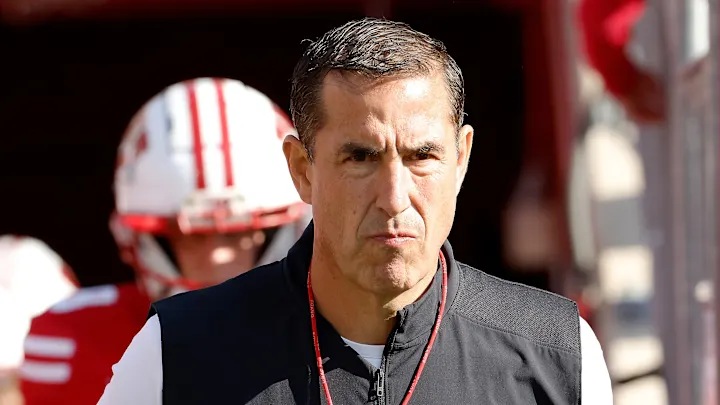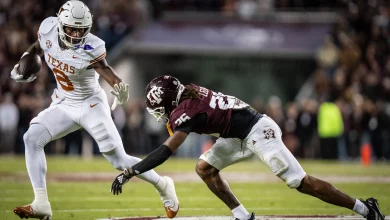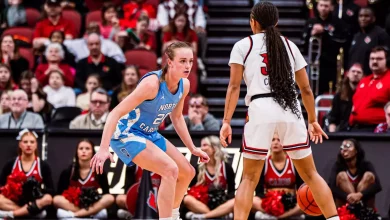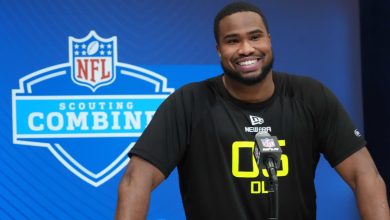Luke Fickell and UW have four major questions before the Badgers’ spring practice.

As spring practice approaches, the University of Wisconsin football program stands on the brink of a transformative season under head coach Luke Fickell. After taking over the program in 2024, Fickell’s goal is clear: he intends to modernize the Badgers’ offensive identity while maintaining the team’s strong defensive traditions. The transition to a new offensive and defensive scheme brings plenty of anticipation, but it also raises several significant questions that will need to be answered before the start of the 2024 season.
Spring practice provides an invaluable opportunity for coaching staffs to assess their rosters and work on implementing their systems. For Fickell and the Badgers, this spring represents a critical period in shaping the team’s future. As the Badgers prepare for their spring practices, four key questions hang over the program:
- How Will Luke Fickell Implement His Offensive System?
- Who Will Emerge as Wisconsin’s Starting Quarterback?
- Can Wisconsin Improve Its Wide Receiver Depth?
- How Will the Defense Adapt to Fickell’s New Approach?
Each of these questions will play a crucial role in determining the Badgers’ success under Fickell’s leadership in 2024 and beyond. As Fickell looks to build a more dynamic, balanced offense while preserving Wisconsin’s defensive toughness, spring practice will be an essential starting point in addressing these four key areas.
1. How Will Luke Fickell Implement His Offensive System?
One of the most exciting and anticipated changes under Fickell’s leadership is his offensive philosophy. Wisconsin has long been known for its dominant power-run game, relying on a massive offensive line, a workhorse running back, and ball control to win games. However, under Fickell, the Badgers are expected to adopt a more balanced offensive approach, integrating elements of a modern, pass-first system that contrasts with their traditionally run-heavy offense.
Fickell’s offensive coordinator, Phil Longo, brings a more spread-based attack, having previously worked at North Carolina, where his offenses were known for their fast pace and explosive passing game. The Badgers, historically known for pounding the ball, will now have to balance their approach and incorporate more creative passing concepts. This shift will be crucial in keeping defenses off-balance and creating more offensive explosiveness, something Wisconsin has lacked in recent years.
Spring practice will be an essential proving ground for this new offensive system. Wisconsin will need to work on installing a variety of offensive schemes designed to stretch the field, including quick passing attacks, play-action, and deep shots. The challenge for Fickell and Longo will be blending these more modern concepts with Wisconsin’s traditional physicality. While the Badgers are still expected to run the ball effectively, the incorporation of a high-flying passing attack will be critical for the offense’s evolution.
Fickell will have to find ways to adjust to the strengths of his players, using a system that maximizes the talents of his offensive line and running backs, while also developing a potent passing game. Will the Badgers be able to smoothly transition from a run-heavy scheme to a more balanced offense, or will they struggle to find the right mix? This question will be one of the key focal points of spring practice.
2. Who Will Emerge as Wisconsin’s Starting Quarterback?
Quarterback has been a position of uncertainty for Wisconsin in recent seasons, and spring practice will be the first major opportunity to settle the competition for the starting job. Wisconsin enters spring practice with multiple candidates vying for the starting position, and the job remains up for grabs. This uncertainty at quarterback is particularly notable as Fickell and Longo work to implement their new offensive system, which will rely more heavily on the quarterback’s ability to execute a variety of passing plays.
Currently, several players are competing for the role of starting quarterback. Among the candidates are Braedyn Locke, who was expected to challenge for the starting job last season, and Nick Evers, a transfer from Oklahoma who brings a dual-threat ability to the position. Additionally, incoming freshman quarterbacks are expected to compete for the spot, adding even more intrigue to the situation.
Fickell and Longo will need to assess how each quarterback handles the system they are looking to implement. The Badgers will want a quarterback who can not only execute the passing game but also manage the offense and make quick decisions. The transition to a more pass-oriented offense means that whoever wins the job will need to be able to handle pressure, read defenses, and take shots downfield.
For the Badgers to succeed, the starting quarterback will need to emerge from this competition as someone who can be both a playmaker and a game manager. Spring practice will be pivotal in determining who best fits Fickell’s offensive scheme and who can rise to the occasion. This position battle will likely extend beyond spring practice into summer camp, but it is during the spring sessions that the contenders will begin to separate themselves and show who can lead Wisconsin’s offense into 2024.
3. Can Wisconsin Improve Its Wide Receiver Depth?
One of the most significant challenges Wisconsin faces heading into the 2024 season is improving its wide receiver depth. Historically, the Badgers have not been known for producing elite wide receivers, and the wideout corps has been a relative weakness for the team in recent years. While Wisconsin has consistently excelled at running the ball, their passing game has often lacked the explosiveness and playmaking ability that many other top-tier programs rely on.
Under Fickell and Longo’s new offensive system, the wide receiver position will become far more important than it has been in the past. The Badgers need playmakers on the outside who can stretch the field and create mismatches against opposing defenses. The goal is to take advantage of the new offensive philosophy that will give quarterbacks the opportunity to throw more often and in more varied ways, so the wide receiver group must step up.
Wisconsin already has a few solid options in place, including Chimere Dike, who has shown flashes of brilliance during his time at Wisconsin. However, questions remain about who else will emerge as reliable targets in the receiving game. With several new recruits, including Tayshon Bardo, joining the team, spring practice will be crucial for identifying which wideouts will fill key roles in the offense.
Wisconsin’s coaching staff will likely experiment with different combinations and formations to see which receivers can thrive in Fickell’s offense. Can Dike take the next step and become a true number-one receiver? Who will step up to complement him, particularly in a system that will require multiple receivers to be effective? Spring practice will be critical in identifying the Badgers’ top receiving threats and determining whether Wisconsin can finally develop the depth and explosiveness they need in their wide receiver corps.
4. How Will the Defense Adapt to Fickell’s New Approach?
While the focus has been on the offensive transformation under Fickell, the defense will also undergo significant changes as part of the overall shift in philosophy. Historically, Wisconsin’s defense has been one of the program’s pillars, consistently ranking among the best in the Big Ten and in the nation. The defense has been physical, disciplined, and tough, which aligns well with the team’s traditional identity. However, Fickell’s arrival brings a more modern approach to defense, which will require Wisconsin’s defenders to adjust to new strategies.
Fickell is known for his ability to craft strong, aggressive defensive units that can apply pressure and force turnovers. His time at Cincinnati showed his capacity to adapt his defensive scheme based on the personnel available, and now he will need to do the same at Wisconsin. The Badgers will likely continue to play a physical brand of defense but with increased emphasis on speed, agility, and creating havoc in the backfield.
One of the key areas that will be tested is how Wisconsin adapts to a potentially faster pace of play. Under Fickell, the offense is expected to move quickly, which will put more pressure on the defense to stay sharp and adjust to a fast tempo. The defensive line, linebackers, and secondary will need to work together in new ways to prevent big plays, particularly with the changing offensive dynamics.
Wisconsin’s defense will also need to develop greater versatility, as Fickell’s system will likely incorporate more hybrid defensive roles and different front-seven alignments. Spring practice will be critical in determining how Wisconsin’s defense will respond to these changes and whether the Badgers can maintain their reputation for defensive excellence while embracing a more up-tempo offensive environment.









